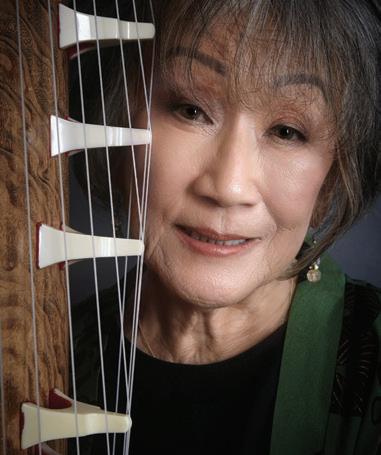2024 National Heritage Fellowships











On behalf of the National Endowment for the Arts (NEA), I am delighted to congratulate the recipients of the 2024 National Heritage Fellowship, the nation’s highest honor in the folk and traditional arts. These distinguished artists and culture bearers continue to sustain and elevate the vibrant cultural legacy of their respective art forms and communities, enriching our entire nation.
The artistic and creative expressions of the 2024 Heritage Fellows allow us to experience and engage our different cultures and histories with an open curiosity while building bridges to embrace our shared humanity as Americans and global citizens. We see this in the work of Indigenous artists like Rev. Dr. Trimble Gilbert (Gwich’in)’s preservation of Gwich’in fiddle music, the Zuni Olla Maiden (Zuni Pueblo)’s stewardship of traditional drumming, singing, and dance, and Susan Hudson (Navajo/Diné)’s quilting illustrating the history of the Navajo people. Others like Pat Johnson— the 2024 recipient of the Bess Lomax Hawes National Heritage Fellowship— create space to gather and connect. Through her activism, Johnson has led the development of the Eddie Mae Herron Center in Pocahontas, Arkansas, which honors regional African American history, tradition, and folk arts.
Mindful of the past, informed by the present, and with an eye towards the sustainability of their art form, Heritage Fellows create opportunities to reimagine artful practices for generations to come. June Kuramoto has forged a genre-transcending career for herself, fusing traditional Japanese koto with contemporary music as a member of the Asian American band, Hiroshima. Another
innovator, Rosie Flores, has preserved and extended the legacies of Texan musicians in the blues, western swing, and Tejano music, incorporating these influences into her own songwriting to pioneer the development of the alt-country movement.
In addition to capturing our histories and blazing new trails, culture bearers often serve our communities as teachers, helping us explore our creative capacity. They inspire us to discover moments of meaning, remembrance, joy, and transformation. This is evident in Bril Barrett’s integration of history into his instruction of the West African “ring shout” tap dancing tradition, Sochietah Ung’s dedication to Cambodian dance and costume making, Todd Goings’s trainings for artisans, technicians, and engineers to maintain the beautiful form and function of carousels across the country, and Fabian Debora’s commitment to spreading hope through his grand scale yet intricate murals of Chicano life, and his work as an arts educator for people who were formerly incarcerated.
Since the program’s inception in 1982, the NEA has honored the vital and dynamic role of culture bearers in preserving and sharing their artistry, traditions, languages, and histories. We are proud to pay tribute to these exceptional fellows who stand as pillars of culture, upholding and exemplifying a broad range of heritage and artistic expression that forms the American story. Thank you for joining us as we celebrate the lifetime dedication of our 2024 fellows!

Maria Rosario Jackson, PhD Chair, National Endowment for the Arts

Bril Barrett is a Chicago tap dancer, teacher, and historian. Born and raised in North Lawndale on the West Side and now based in the South Side’s Bronzeville, his four-decade career is rooted in place and crosses time.
Tap was created by enslaved Black people who, when drums were made illegal due to the instrument’s role in resistance, communicated by making rhythms with their bodies instead. These rhythms were passed on in clandestine improvisation circles known as “shouts” or “ring shout,” one of the few West African prayer practices to survive the Middle Passage. It is in this tradition that Barrett learns and teaches.
Barrett fell in love with tap at age four thanks to a program offered by his first teacher, Carlton Smith. After the program ended, Barrett’s mother committed to continuing the lessons, riding with him two hours on the Red Line each way—where Barrett met his primary mentor, Ayrie “Mr. Taps” King.
Barrett joined a long line of dancers who came up “shedding wood” on street corners. After winning grand prize in 1988’s Search for Chicago’s Tap Dance Kid, he toured with companies such as Riverdance and Aaron Tolson’s Imagine Tap. During that time, he learned from several early 20th-century legends of tap, including Dr. Jimmy Slyde, Dr. Bunny Briggs, and Dr. Leonard Reed.
Barrett soon realized that many audiences didn’t know tap the way he had learned it. They might know Shirley Temple or Bill
Chicago, Illinois
“Bojangles” Robinson, but did they know Robinson’s teacher, Alice Whitman? Did they know about tap as resilience, or resistance? He began to include a history lesson in every class he taught, recounting stories given by his teachers in turn.
With co-founders Jumaane Taylor and Martin ‘Tre’ Dumas III, Barrett created the Making A Difference Dancing Rhythms Organization (M.A.D.D. Rhythms) in 2001 to provide a place for young people to learn and grow. M.A.D.D. Rhythms is now a leading tap collective worldwide, developing a partnership with Bronzeville’s historic Harold Washington Cultural Center to provide affordable arts education and mentorship to Chicago youth.
In 2020, Barrett was awarded the Chicago Dancemakers Forum’s Lab Artist Fellowship, and in 2022 he received the Helen Coburn Meier and Tim Meier Foundation for the Arts Achievement Award. M.A.D.D. Rhythms is a part of the International Association of Blacks in Dance’s 2023-24 FRWD cohort, as well as the Chicago Black Dance Legacy Project’s 2023-24 cohort.
Barrett’s pedagogy of shared improvisation for social-emotional learning shows his students that their lives and selves matter. His circles weave past, present, and future to pass on our history in the way it was created—in the rhythm of our breath, and bodies, and feet.
By Yul Ailea Stites, Making A Difference Dancing Rhythms Organization
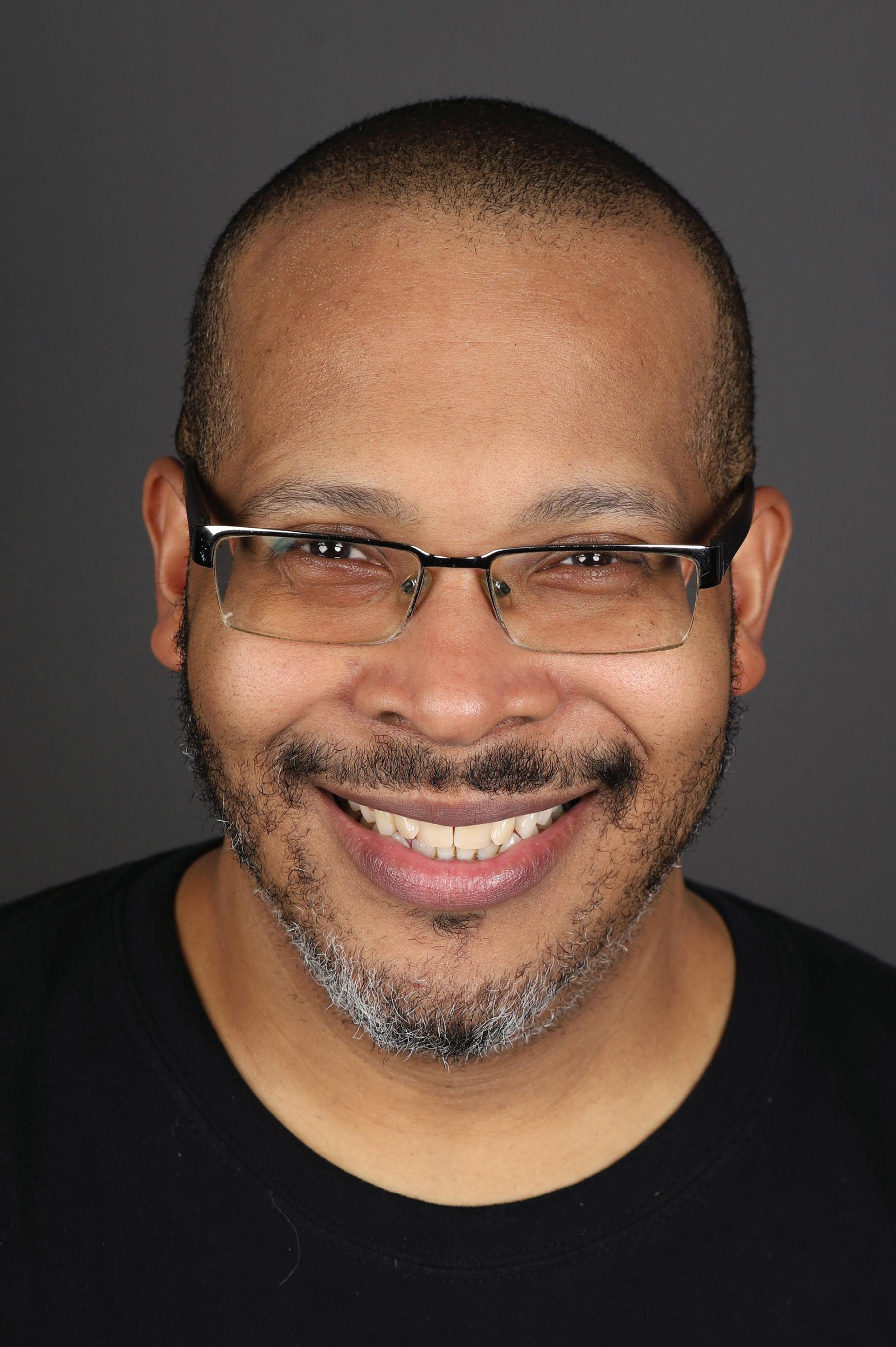
Los Angeles, California
Fabian “Spade” Debora’s artistic cultural work breaks our hearts, softens us, and leads us to move beyond the ideas we have about gang members and formerly incarcerated individuals. It works on us in ways to which we are little accustomed. A former incarcerated gang member, Debora’s artwork interprets a broad view of life experiences, which is aptly symbolized by his signature wide-rimmed shades. Through which, he sees tenderness and inclusivity, where low-riders transport love to places where love has not yet arrived.
In his birthplace of El Paso, Texas, and childhood community of East Los Angeles’ Boyle Heights, Debora was surrounded by the Chicano art movement’s groundbreaking cultural heritage work, which became visibly impactful in his muralism. This public art and its reflection on Chicano collective history, cultural identity, and social justice provided significant meaning in his Mexican American culture in Los Angeles. As a unique form of American art, it infused Debora’s imagination with hope during his oppressed youth. The Chicano art movement also supplied him with mural mentors whose influence was palpable in his work and in his desire to inform the broader community of the value of those who have been in gangs or incarceration.
As a first-generation Mexican American child with an incarcerated father, Debora was forced to flee to the street gang of his neighborhood for survival after being expelled from the Catholic parish school following an
incident of violence. Eventually, Debora’s gang lifestyle and graffiti art resulted in adolescent detention. Through his years of subsequent incarceration, struggles with substance abuse, and its impact on his mental health, Debora continued to use art as an outlet.
Self-taught, his early pencil illustrations from his incarceration are now part of the Getty Museum’s Black Book.
Upon release as a young man, Debora walked into the doors of Los Angeles’ Homeboy Industries, the world’s largest gang rehabilitation program. After completing the non-profit’s rehabilitation program, he went on to create the organization’s substance abuse program and served as a drug counselor and art class facilitator. His talents evolved as a healing arts educator committed to sharing his gifts by teaching others with similar lived experience.
In 2019, as recipient of the Homeboy Hero Award, Debora founded the Homeboy Art Academy. As a culture bearer of the Chicano movement’s visual heritage, his trauma-informed vision led to his 2020 Hilton Humanitarian Fellowship. His art accompanies Gregory Boyle’s award-winning book Forgive Everyone Everything. His public murals and paintings are showcased throughout the United States and abroad. Above all, his work gives us hope.
By Gregory Boyle, S.J., Founder of Homeboy Industries and Laura Miera, Art Therapist

Austin, Texas
Rosie Flores, triple-threat Texas musician, has never allowed the challenge of navigating the male-centric worlds of rock and country music slow her down. In fact, she often drew upon those challenges as source material in sharply observed songs she not only wrote and sang with authority and passion, but also brought to life musically as a widely respected lead guitarist in a string of notable bands.
A daughter of San Antonio whose musical journey also has included quality time in Austin, Los Angeles, and Nashville, Flores has adroitly absorbed, helped preserve, and extended the musical legacies of influential Texas musicians as varied as country music’s King of Western Swing Bob Wills & His Texas Playboys, blues guitar master T-Bone Walker, and Tex Mex innovator Doug Sahm.
In the 1970s, she became one of the most celebrated performers on the “cowpunk” circuit (a hybrid of punk rock and country), alongside such other rising stars as Dwight Yoakam, Lucinda Williams, Rank & File, and Los Lobos (2021 NEA National Heritage Fellows). The release of her 1987 debut solo album Rosie Flores proved her to be a singer and songwriter of the first rank, and helped lay the foundation for what coalesced into the alt country movement.
Flores became the first Latina to crack Billboard’s country music chart. For her enthusiastic participation in and ongoing promotion of Austin’s deep and wide
music scene, including the annual South by Southwest Conference, the city has proclaimed Rosie Flores Day in 2006.
Flores has remained a spark plug live performer for more than five decades, a goosebump-inducing electric guitarist and songwriter as well as champion of the trailblazers who preceded her. Notably, she lured pioneering rockabilly heroines Wanda Jackson (2005 NEA National Heritage Fellow) and Janis Martin (“the female Elvis”) back into recording studios and onto concert stages for lauded late-career rejuvenations. Flores won a 2007 Peabody Award for her narration of the NPR rockabilly documentary, Whole Lotta Shakin’.
Tapping her Mexican heritage, Flores formed Las Super Tejanas with singer-songwriter Tish Hinojosa, accordionist Eva Ybarra (2017 NEA National Heritage Fellow), Shelly Lara, and Las Madrugadoras mariachi trio.
Her esteem has only grown over the years, to the point where she and her music are included in Middle Tennessee State University’s History of Country Music courses. She was afforded a prominent spotlight position in the Country Music Hall of Fame and Museum’s exhibition “Western Edge: The Roots & Reverberations of Los Angeles Country-Rock” in Nashville.
Randy Lewis covered pop music for the Los Angeles Times from 1981-2020, with special emphasis on country and Americana music.

GWICH’IN FIDDLER Arctic Village, Alaska
Trimble Gilbert is traditional chief and reverend of the Neets’ąįį
Gwich’in people from Vashrąįį K’oo, Alaska. The Gwich’in are among the furthest north of the American Indian people in North America, living in remote isolated villages. They live a subsistence lifestyle with traditions that date back more than 10,000 years.
Gilbert is a master Gwich’in fiddler and highly esteemed culture bearer. Few people possess the depth of cultural, spiritual, and intellectual knowledge and share it so extensively and with such humility as does Chief Gilbert. His life is a walking testament to the cultural values, practices, traditions, and knowledge of the Gwich’in people.
European contact with the Gwich’in began in 1840 through French Canadian fur traders, who brought with them the fiddle, jig, and square dances. The Gwich’in took fondly to the new music and quickly adapted it to have Indigenous names and style, defining a unique genre of folk fiddle sound, Gwich’in fiddle music.
Gilbert was born in 1935 to James and Maggie Gilbert in Vashrąįį K’oo. At the time, the Neets’ąįį Gwich’in lived a nomadic lifestyle, traversing vast wilderness, following the changing seasons and migration of animals they depended on for their survival. There was no school in the village, so Gilbert’s education was on the land, learning from his parents and elders the ways of arctic survival. From his earliest years, he was an avid, self-driven
learner. By seven years old he was already working on making his own snowshoes from bent wood and sinew.
During the holidays the Gwich’in would gather in the village, returning from remote hunting and trapping grounds, to celebrate together. These celebrations included Gwich’in fiddle dances, which extended an entire week into the New Year. As a young boy, Gilbert remembers being captivated by the sounds of the fiddle and exuberance of the dances.
In 1953, the Neets’ąįį Gwich’in began to settle more permanently into the village and Gilbert ordered a fiddle from the Sears Roebuck catalogue. He learned to play the fiddle in the same way he learned other facets of Gwich’in cultural and traditional knowledge: through watching, listening, and diligent practice. By the 1970s, he was able to listen to Gwich’in fiddle music coming over the airwaves from Canada on a transistor radio. This helped him to further refine his repertoire of songs and unique style.
Rev. Dr. Chief Trimble Gilbert’s intellectual, cultural, and artistic contributions to Alaska were recognized by the University of Alaska Fairbanks with an honorary doctorate in 2016. He has dedicated much of his life to teaching others through programs such as Dancing with the Spirit, which brings fiddle music into schools. His knowledge is a national treasure, only rivaled by his willingness to share and teach others.
By Evon Peter (Neets’ąįį Gwich’in), Senior Research Scientist, University of Alaska Fairbanks

Marion, Ohio
Master carousel carver and restorationist Todd Goings has worked for 35 years to keep the art of American carved wooden carousels alive. Built in a handful of master artisan workshops from the 1880s to the 1930s, wooden carousels are participatory folk-art environments that set whimsical carved animals to music and movement in custom-built mechanical frames. Of America’s several-thousand original wooden carousels, just 150 remain. Goings has worked on many of them, and, along the way, has revived the American carousel workshop for a new century.
Raised in the rural village of Caledonia in North Central Ohio, Goings came to carousels through an early passion for woodworking, with jobs in cabinetry, millwork, patternmaking, and eventually, woodcarving.
By the 1980s, the sad state of America’s wooden carousels had sparked a revival of carousel conservation across America which, in turn, demanded a rebirth of traditional carousel arts. Goings’ wideranging woodworking training was destiny.
“It chose me,” he said. “Everything I personally learned, the only place it comes together is on carousels.”
Goings opened Carousels and Carvings—a full-service artisan carousel workshop— in Marion, Ohio, in the 1990s. A century separated from master carousel artists like W.H. Dentzel, Charles I.D. Looff, William F. Mangels, & Marcus Illions, Goings trained himself as a carousel carver through years of restoring the masters’ work. Goings is quick
to note that a carousel is more, however, than just a frame for carved menageries: it is an “interactive, rideable piece of art” that keeps a century-old leisure experience alive. Carousels and Carvings is one of only a handful of shops in the country specializing in restoring and building whole carousels: from the carvings to the frame to custom-built mechanicals. Carousels and Carvings has restored dozens of carousels—including Philadelphia’s Woodside Park Carousel, Coney Island’s B&B Carousel, the Memphis Grand Carousel, and the Hydro Oklahoma Carousel—alongside newly built carousels that expand and update tradition with unusual animals and wheelchair-accessible chariots. Like the past masters, Goings’ work takes years. The time is worth it, he said: “In my career, I’ve never taken a carousel down that hasn’t gone back up.”
Carousels and Carvings provides training and livelihoods to artisans, craftspeople, engineers, and technicians from across North Central Ohio. But Goings’ work doesn’t stop in the shop: every spring, he and his team crisscross the country’s zoos, amusement parks, and fairgrounds for the annual preseason carousel check-ups that earned him the nickname “the carousel doctor.” For his tireless dedication to keeping carousel traditions alive, Goings’ peers have called him “genius” and “the best in the business.” But for Goings, the magic of the carousel—what makes it all worthwhile—is in its use: it’s folk art you can ride.
By Jess Lamar Reece Holler, Folklorist, Marion Voices Folklife & Oral History

Susan Hudson is a multidimensional artist and skilled quilter, who has tapped into her personal struggles and the struggles of her people through her art. Born in East Los Angeles, California, she now lives in Sheep Springs, New Mexico. A member of the Navajo Nation, Hudson’s clans are Towering House People, Apache People, Water Edge People, and Mexican People.
Hudson’s mother, Dorothy Woods, as well as her grandmothers, were forced to learn sewing in boarding schools where there was little tolerance for mistakes. When Hudson was nine years of age, her mother taught her how to sew out of necessity, as they were quite poor and couldn’t afford to buy clothes. Hudson learned to alter donated clothes and made quilts out of the scraps.
Hudson’s quilting became an income stream when she began making Star Quilts for Indian pow wows and giveaways at the request of Ben Nighthorse Campbell, a former U.S. Senator from Colorado. Senator Campbell encouraged her to break away from making traditional star quilts and she soon developed her own artistic voice with contemporary ledger art quilts.
Ledger art is a type of narrative drawing or painting on animal hides, primarily practiced by Plains Indians in the 1860s. Hudson uses a crossover style inspired by ledger art, recounting history through her quilts. She has taken her quilting to a whole new level, serving as an activist storyteller. Her pictorial quilts honor her ancestors and illustrate the proud history of the Navajo people.
Sheep Springs, New Mexico
Through quilting, Hudson chronicles the sacrifices and strengths of her family and remembers their hardships. Important pieces in her work include the quilts she has named Missing and Murdered Indigenous Women Since 1492 and Walk of My Ancestors: Coming Home, depicting the return from the Long Walk of the Navajos. Hudson also creates quilts that depict the trauma of the boarding schools.
Hudson is a co-founder of the Navajo Quilt Project, which donates fabric to elders all across the Navajo Nation. The Navajo Quilt Project engages with the community, makes quilts for giveaways and traditional ceremonies, and empowers others to start their own businesses.
Hudson’s quilts have been acquired for collection by the International Quilt Museum, Heard Museum, Autry Western Museum, Riverside Museum, and National Museum of the American Indian. Other acquisitions include the Gochman Collection, the John and Susan Horseman Foundation, and many private collectors.
No longer silenced, the voices of her Indigenous relatives can now be heard through Hudson’s quilt exhibitions around the country. In competition, her quilts have garnered 29 First Place awards, 16 Second Place awards, 6 Third Place awards, 4 Special awards, 12 Best of Division awards, Jackie Autry Purchase, Idyllwild Imagination Art Award, and 5 Best of Show awards.
By Ben Nighthorse Campbell (Northern Cheyenne), U.S. Senator – Retired

June Kuramoto came to the U.S. by boat as a child from Japan as an immigrant in the 1950s. She was raised in the Los Angeles neighborhood of Crenshaw, home to many Black artists, including Ray Charles, Tina Turner, and Natalie Cole, was one of the few neighborhoods where Japanese did not face discrimination and were allowed to freely live. As a young child, when she heard Kazue Kudo, a virtuoso koto player from Japan, perform. Kuramoto knew the koto, a 13-string Japanese instrument, would be her connection to Japan, and she asked her mother if she could take lessons. Kudo Sensei recognized Kuramoto’s talent and her ability to emotionally connect to the music. As a vibrant young kotoist, she was a featured player in numerous classical koto concerts in LA’s Little Tokyo.
A big fan of rock-and-roll and soul, Kuramoto wanted to adapt the song “Duke of Earl” that she heard on the radio for the koto. Her teacher told her that this would be difficult to do. This challenge only catalyzed her desire and determination to experiment combining the traditional Japanese koto with contemporary music. This led her to the creation of Hiroshima, a pioneering Grammynominated Asian American band that blended the sounds of the koto with keyboards, sax, drums, guitar, bass, and vocals.
Through Hiroshima she not only fulfilled her dream, but Kuramoto also became a mentor and role model to young Japanese American
KOTO MUSICIAN Alhambra, California
women who now had a sense of pride in their culture and identity. A pivotal moment for Kuramoto came in the early 1980s when Hiroshima performed their first tour outside of California. At a Howard University performance, Kuramoto recalls the rousing standing ovation she received for her solo and credits this performance as the start of many years of undying support for her music by the Black community.
Her recording credits for television, film, and stage include Heroes, The Last Samurai, and the musical Sansei. Kuramoto has been recognized with many awards both as an individual and as a co-founder of Hiroshima. The Smithsonian, U.S. Congress, State of California, and City and County of Los Angeles have honored her work. Kuramoto served twice as an artist-in-residence at the Japanese American Cultural and Community Center. She served as president of the Koto String Society, a nonprofit group that produced shows featuring up to 100 koto performers accompanied by a full symphony orchestra.
Today she gives of her time freely to teach a group of seniors and to mentor up-andcoming koto artists. Kuramoto is an indemand solo artist at community events like the annual Day of Remembrance which is a time to reflect upon the years of suffering by our ancestors during the war.
By Janice D. Tanaka, Filmmaker and writer
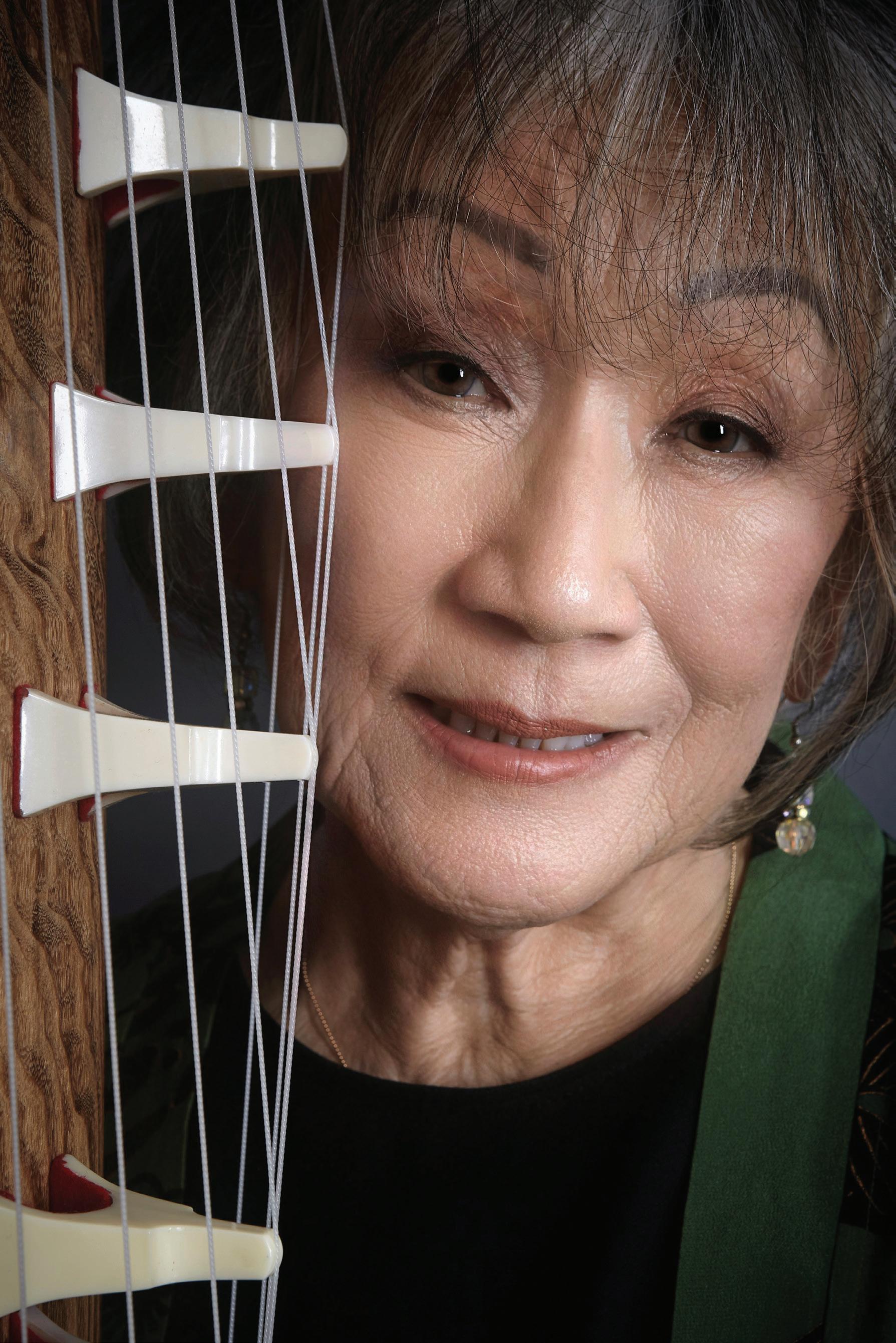
Sochietah Ung is a multitalented costume maker, dancer, teacher, choreographer, playwright, and producer with a passion for sharing his skills across and beyond Cambodian communities nationwide. He is particularly known for his costume and crown making. Ung’s crowns are the favored throughout the United States and internationally, including by Princess Bopha Devi who came to the U.S. to perform in 1985. The Princess was so impressed that she told him, “You have fate. You were born to do this job.” Ung also created crowns for a Broadway production of The King and I. He is one of the community’s leading teachers for three of the major Cambodian dance roles (giant, male, and female) as well as a favored folk dance teacher. In addition, Ung is an all-around director of popular Cambodian theater productions.
Ung’s broad knowledge derives from his childhood in Cambodia, where he regularly attended classical theater with his grandmother. He became enamored with it, committing every costume detail and dance movement to memory. In those early years, he could not have known how invaluable his passion would become in the future.
Ung survived the Cambodian genocide from 1975 to 1979. Pressed into forced labor under deadly conditions established by the Khmer
Washington, DC
Rouge, Ung was the only one in his family to escape the ordeal alive. He was fortunate to have sponsors who adopted him, eventually bringing him to the Washington, DC area. At that time in the early 1980s, several Cambodian dancers in DC were cobbling together a performance. They heard about Ung and his knowledge of Khmer classical theater and reached out to him. He not only advised them on the appearance of the costumes but began crafting them himself. He also started dancing.
Since that time, Ung has diligently studied Cambodian dance and has become a master dancer and teacher. He learned not only from U.S.-based masters like Phuong Phan, but he also learned from Chea Samy, Sok Samon, Neak Kru Leas, and other masters from Cambodia.
Over the decades, Ung has imparted Cambodian dance and costume making to hundreds of students. He regularly performs at theaters, festivals, and museums throughout the Washington, DC region, including the Kennedy Center, Smithsonian, National Folk Festivals, and more. In 2016, the Virginia Folklife Program recognized him as a master costume maker. Ung regularly displays and demonstrates his work at folk festivals in Richmond and throughout the country.
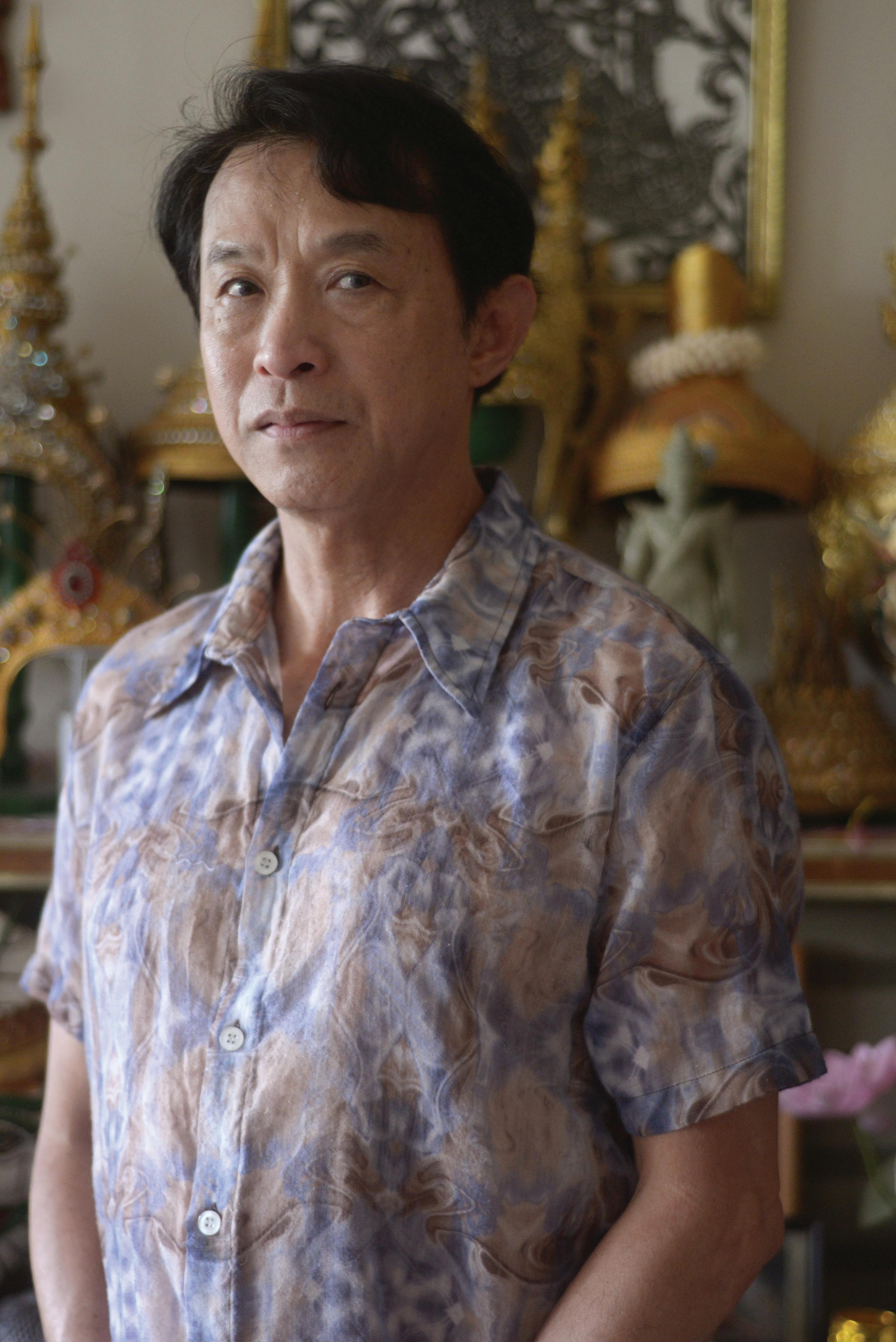
Zuni, New Mexico
The Zuni Olla Maidens are a venerated dance troupe from Zuni Pueblo in western New Mexico, equally well-known for singing, drumming and their trademark dance balancing pottery on their heads, as well as being an all-female troupe. The Zuni Olla Maidens are also unique in that their group has always consisted of related women, making it a family affair for more than 70 years.
The significance of the family connection gives the Zuni Olla Maidens reliance and longevity. The individual members are stewards, knowing they owe much to the women that came before, as well as being responsible for those who will come after they are gone.
The balanced pottery style of dancing originated in the 1920s by a Hopi woman named Daisy Nampeyo, who married into Zuni. It was designed as a social dance, performed by women, to showcase both Zuni pottery as well as the clothing and jewelry made in the Pueblo.
In the 1950s, the style was adopted by Crystal Sheka. The group was led for decades by Sheka’s daughter, Cornelia Bowannie. When Bowannie retired from the group in 2015, her daughters, Juanita Edaakie and Loretta Beyuka, became leaders. Edaakie says when they retire, they’ll pass on the leadership to one of their nieces.
Being both a family group and exclusively female is essential to the Zuni Olla Maidens. Edaakie explains: “We pay homage to our ancestral women who centuries ago used to get water from nearby and carry them in these great big jars called ollas. Olla is the Spanish word for pot. And we know it wasn’t an easy job.”
The Zuni Olla Maidens have been recognized with invited performances at the National Museum of the American Indian, (Washington, DC), Richmond Folk Festival (Richmond, Virginia), Zuni Festival of Arts & Culture, (Flagstaff, Arizona), and Gallup Inter-Tribal Indian Ceremonial (Gallup, New Mexico) among others. A recreation of the Olla Maidens regalia, made by Edaakie, is part of the Museum of Indian Arts and Cultures’ permanent exhibit in Santa Fe, New Mexico.
The group received the distinguished Allan Houser Award from the Santa Fe Indian Market for “preserving and reshaping the face of native arts.” They were also recognized with a New Mexico Historic Women Marker, a roadside marker east of Zuni Pueblo that briefly outlines the group’s history and honors their artistic excellence.
By Thomas Grant Richardson, PhD. Director, Center for Washington Cultural Traditions.

Pocahontas, Arkansas
Pat Finley Johnson is a pillar to the community of Pocahontas, Arkansas, where she supports community fellowship, traditional knowledge, and Black culture and heritage. As a recipient of the 2024 NEA Bess Lomax Hawes National Heritage Fellowship, Johnson has worked tirelessly for over two decades to contribute to the preservation of local history and folklife in Randolph County, Arkansas.
Born in 1948 in Pocahontas, she has lived in Randolph County for her entire life. She attended the “Pocahontas Colored School” as a child and was a student of Eddie Mae Herron. After completing eighth grade, she was bussed with African American students from Pocahontas and other rural towns to Newport to attend high school. It was during these bus trips that she met Sherley Johnson and the two began dating. They were married in February 1966 and have two children: Jacqueline and Douglas, four granddaughters, and four great-granddaughters.
Johnson started her journey to create the Eddie Mae Herron Center in 2000 as a way for her community to gather and connect with and honor the nearly two hundred years of African American history, traditions, and culture in Randolph County. She retired in 2008 from her work with the Arkansas Health Department and the Arkansas Department of Human Services. Shortly after her retirement, Johnson began working fulltime as a community activist. From the start, Johnson brought community members and institutions together to provide a foundation
for this effort and form an important network of long-term supporters. She plans events that increase the vitality of the community and creates a space for public engagement and appreciation of local history and African American history. The Eddie Mae Herron Center tells the story of Randolph County through photographs, displays, books, and spoken memories of the people who grew up there, and preserves that heritage for future generations.
The Eddie Mae Herron Center’s public programs draw people together, all of which Johnson organizes and attends. The Center has annual events for Black History Month, Martin Luther King, Jr. Day, Juneteenth, Christmas, family reunions, and birthday parties. Johnson has organized many other events that have brought together people from the community to learn about local history and folk arts, including an annual hog butchering event which was included as part of the 2023 Smithsonian Folklife Festival.
Through the Eddie Mae Herron Center, Johnson has created a dynamic space for local community traditions, community fellowship and activism, a place where the performance of daily heritage is enacted regularly and safely. Johnson’s work diversifies the history of the Ozarks region and honors the evolving nature of folklife while also upholding important community traditions, folk arts, and customary knowledge.
By Lauren Adams Willette, Folk Arts Fieldwork Coordinator, Arkansas Folk and Traditional Arts


The Bess Lomax Hawes National Heritage Fellowship honors “keepers of tradition” who through their efforts as organizers, educators, producers, cultural advocates, or caretakers of skills and repertoires have had a major beneficial effect on the traditional arts of the United States. A member of the Lomax family of pioneering American folklorists, Bess Lomax Hawes (1921–2009) committed her life to the documentation and presentation of American folk artists. She served as an educator both inside the classroom and beyond, and nurtured
the field of public folklore through her service at the National Endowment for the Arts. During her tenure as director of the NEA Folk Arts Program (1977–1993) an infrastructure of state folklorists was put in place, statewide folk arts apprenticeship programs were initiated, and the National Heritage Fellowships were created. In 1993 she received the National Medal of Arts for her many contributions in assisting folk artists nationwide and in bringing folk artistry to the attention of the public.

Dr. Maria Rosario Jackson, Chair
Ascala Tsegaye Sisk, Senior Deputy Chair
Ra Joy, Chief of Staff
Jennifer Chang, White House Liaison and Senior Advisor to the Chair
Sonia Tower, Director of Strategic Communications and Public Affairs
Ayanna Hudson, Chief Strategy, Programs, and Engagement Officer
Erin Jenkins Waylor, Folk & Traditional Arts Team Lead
Don Ball, Assistant Director of Public Affairs (Publications)
Christine Gant, Advisor to the Director of Event Management & Development
Allison Hill, Public Affairs Specialist
Clifton Archuleta, Audiovisual Production Specialist
Carlos Arrien, Web Specialist
Elizabeth Auclair, Assistant Director of Public Affairs (Press)
Paulette Beete, Social Media Manager
Aunye Boone, Writer/Editor
Carolyn Coons, Public Affairs Specialist
Jean Choi, Attorney Advisor
Lauren DeMarco, Asst. Grants Management Specialist
Mike Burke Kirby, Congressional Services Officer
William Langer, Attorney Advisor
David Low, Web Manager
Josephine Reed, Media Producer
Kelli Rogowski, Visual Information Specialist
Jennie Terman, Folk & Traditional Arts Specialist
The National Endowment for the Arts would like to express its appreciation to the National Council for the Traditional Arts (NCTA) for its assistance in planning and producing the 2024 National Heritage Fellowships events, which were managed for the NCTA by Senior Associate Director
Madeleine Remez. The NCTA is a private non-profit corporation founded in 1933 and dedicated to the presentation and documentation of folk and traditional arts in the United States.
National Council for the Traditional Arts Staff
Blaine Waide, Executive Director
Madeleine Remez, Senior Associate Director
Colleen Arnerich, Director of Production and Operations
Colleen (CJ) Holroyd, Program Services Manager
Bridgette Hammond, Festival Logistics Coordinator
Keenan Dubois, Production Assistant
Kayt Novak, Festival Assistant
Amy Millin, Development Specialist
Elaine Randolph, Administrative Specialist
Deirdre Whitty, Finance Manager
Vitoria Ido, Finance Assistant
The NCTA presents the nation’s finest traditional artists to the public in festivals, national and international tours, concerts, radio and television programs, films, recordings and other programs. For over 30 years, the NCTA has worked with the National Endowment for the Arts on a consulting basis to manage and coordinate the National Heritage Fellowships activities honoring the Fellowship recipients.
The National Endowment for the Arts and the NCTA would also like to acknowledge the invaluable assistance of the following individuals and institutions:
Cheryl T. Schiele
The staff at the Kennedy Center Terrace Theatre
American Folklife Center, Library of Congress
Nicole Saylor, Director
Theadocia Austen
Old Town Trolley Tours
Mid South Audio
Program and promotional materials designed by Fletcher Design, Inc./Washington, DC
Kennedy Center Terrace Theater – September 17, 2024
Director
Paul Douglas Michnewicz
Stage Manager
Valerie Bijur Carlson
Set Design
Tony Cisek
Lighting Design
Amy Elliott
Production Assistant/Green Room Coordinator
Susie Pamudji
Logistics
Rahmah Elmassry
Amy Millin
Video Projection/Production
CVW Event Productions
Photography/Documentation
Tom Pich
Sign Language Interpreter
Miako Villanueva
Transportation Coordinator
Eddie Mendoza
Radio Production
American Routes
Host and Executive Producer: Nick Spitzer
Producer: Olivia Broslawski
Additional artist interviews courtesy Josephine Reed, Media Producer, Public Affairs, National Endowment for the Arts
Go to Amroutes.org for air dates and listings
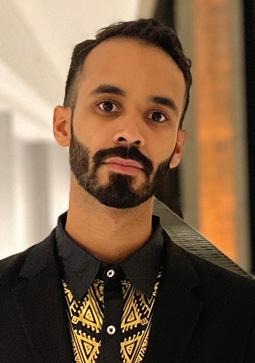
Jake Blount is an award-winning performer and interpreter of Black folk music. He has performed at venues including Carnegie Hall, the Library of Congress, Newport Folk Festival, and NPR’s Tiny Desk Concerts. His writing has appeared in NPR, Rolling Stone, Paste Magazine and elsewhere. Originally born in Washington, DC, Blount is now pursuing a Ph.D. in Musicology and Ethnomusicology at Brown University in Providence, RI.
The 2024 National Heritage Fellowship films were produced by Hypothetical in association with the National Council for the Traditional Arts presented by the National Endowment for the Arts.
Directed and Produced by Olivia Merrion
Aurora Brachman
Princess Daazhraii Johnson
James Johnson III
Chelsea Hernandez
Neiagha Thomans
Ryan Goble
Jake Zalutsky
Coordinating Producer
National Council for the Traditional Arts
Madeleine Remez
Coordinating Producer
National Endowment for the Arts
Erin Jenkins Waylor
Executive Producer
Hypothetical Olivia Merrion
Editors
Omri-Shir Dallal, Apropost
Lorena Alvarado
Ái Vuong, TÁPI Story
Samuel Díaz Fernández, TÁPI Story
Mitch Martin, The Cutting Board
Nico Frank
Trisha Pickelhaupt
Will N. Miller
Olivia Merrion
Colin Marshall
Additional Production Assistance
National Endowment for the Arts
Clifton Archuleta
Elizabeth Auclair
Don Ball
Allison Hill
Josephine Reed
Sound Design & Miix
Hansdale Hsu
Colorist
Stephen Derluguian
Special Thanks
Cheryl T. Schiele
This event is an external rental presented in coordination with the Kennedy Center Campus Rentals Office and is not produced by the Kennedy Center.
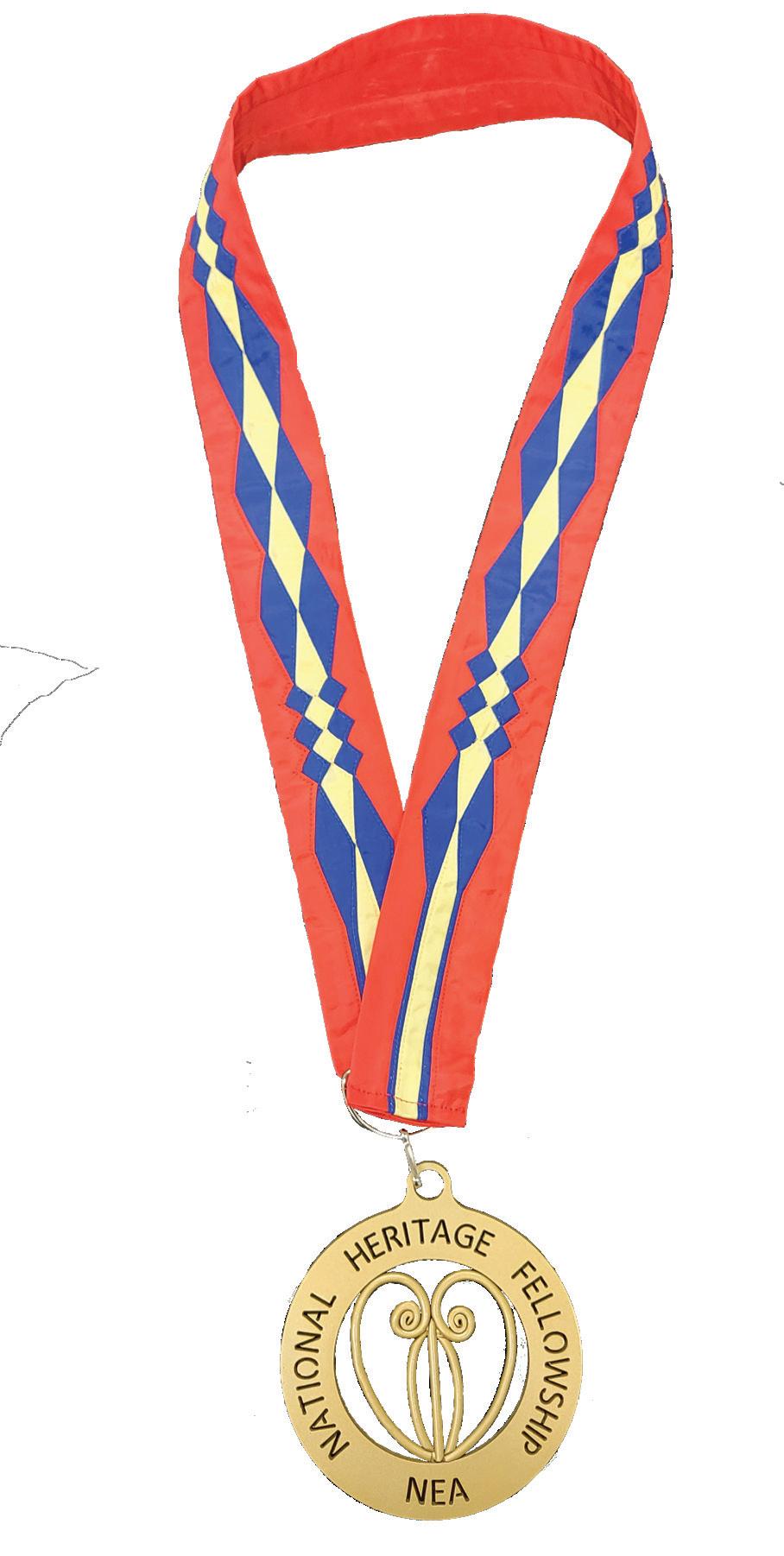
Dewey Balfa * Cajun Fiddler Basile, LA
Joe Heaney * Irish Singer Brooklyn, NY
Tommy Jarrell * Appalachian Fiddler Mt. Airy, NC
Bessie Jones * Georgia Sea Island Singer Brunswick, GA
George Lopez * Santos Woodcarver Cordova, NM
Brownie McGhee * Blues Guitarist/Singer Oakland, CA
Hugh McGraw * Shape Note Singer Bremen, GA
Lydia Mendoza * Mexican American Singer San Antonio, TX
Bill Monroe * Bluegrass Musician Nashville, TN
Elijah Pierce * Carver/Painter Columbus, OH
Adam Popovich * Tamburitza Musician Dolton, IL
Georgeann Robinson * Osage Ribbonworker Bartelsville, OK
Duff Severe * Saddle Maker Pendleton, OR
Philip Simmons * Ornamental Ironwork Charleston, SC
Sanders “Sonny” Terry * Blues Harmonica/Singer Holliswood, NY
1983
Sister Mildred Barker * Shaker Singer Poland Spring, ME
Rafael Cepeda * Bomba Musician/Dancer Santurce, PR
Ray Hicks * Appalachian Storyteller Banner Elk, NC
Stanley Hicks * Appalachian Musician/ Storyteller/Instrument Maker Vilas, NC
John Lee Hooker * Blues Guitarist/Singer San Francisco, CA
Mike Manteo * Sicilian Marionettist Staten Island, NY
Narciso Martinez * Texas-Mexican Accordionist/ Composer San Benito, TX
Lanier Meaders * Potter Cleveland, GA
Almeda Riddle * Ballad Singer Greers Ferry, AR
Joe Shannon * Irish Piper Chicago, IL
Simon St. Pierre * French American Fiddler Smyrna Mills, ME
Alex Stewart * Cooper/Woodworker Sneedville, TN
Ada Thomas * Chitimacha Basketmaker Charenton, LA
Lucinda Toomer * African American Quilter Columbus, GA
Lem Ward * Decoy Carver/Painter Crisfield, MD
Dewey Williams * Shape Note Singer Ozark, AL
* Deceased
Clifton Chenier * Creole Accordionist Lafayette, LA
Bertha Cook * Knotted Bedspread Maker Boone, NC
Joseph Cormier * Cape Breton Violinist Waltham, Ma
Elizabeth Cotten * African American Singer/Songster Syracuse, NY
Burlon Craig * Potter Vale, NC
Albert Fahlbusch * Hammered Dulcimer Player/ Builder Scottsbluff, Ne
Janie Hunter * African American Singer/ Storyteller Johns Island, SC
Mary Jane Manigault * African American Seagrass Basketmaker Mt. Pleasant, SC
Genevieve Mougin * Lebanese American Lace Maker Bettendorf, IA
Martin Mulvihill * Irish American Fiddler Bronx, NY
Howard “Sandman” Sims * African American Tap Dancer New York, NY
Ralph Stanley * Bluegrass Banjo Player/ Appalachian Singer Coeburn, VA
Margaret Tafoya * Santa Clara Pueblo Potter Espanola, Nm
Dave Tarras * Klezmer Clarinetist Brooklyn, NY
Paul Tiulana * Eskimo Mask Maker/Dancer/ Singer Anchorage, Ak
Cleofas Vigil * Hispanic Storyteller/Singer San Cristobal, NM
Emily Kau’i Zuttermeister * Hula Master (Kumu Hula) Kaneohe, Hi
Eppie Archuleta *
Hispanic Weaver San Luis Valley, CO
Periklis Halkias * Greek Clarinetist Astoria Queens, NY
Jimmy Jausoro * Basque Accordionist Boise, ID
Mealii Kalama * Hawaiian Quilter Honolulu, HI
Lily May Ledford * Appalachian Musician/Singer Lexington, KY
Leif Melgaard * Norwegian Woodcarver Minneapolis, MN
Bua Xou Mua * Hmong Musician Portland, OR
Julio Negrón-Rivera * Puerto Rican Instrument Maker Morovis, PR
Alice New Holy Blue Legs * Lakota Sioux Quill Artist Rapid City, SD
Glenn Ohrlin * Cowboy Singer/Storyteller/ Illustrator Mountain Veiw, AR
Henry Townsend * Blues Musicain/Songwriter St. Louis, MO
Horace “Spoons” Williams * Percussionist/Poet Philadelphia, PA

1986
Alphonse “Bois Sec” Ardoin * Creole Accordionist Eunice, LA
Earnest Bennett * Anglo-American Whittler Indianapolis, IN
Helen Cordero * Pueblo Potter Cochiti, NM
Sonia Domsch * Czech American Bobbin Lace Maker Atwood, KS
Canray Fontenot * Creole Fiddler Welsh, La
John Jackson * Black Songster/Guitarist Fairfax Station, VA
Peou Khatna * Cambodian Court Dancer/ Choreographer Silver Spring, MD
Valerio Longoria * Mexican American Accordionist San Antonio, TX
Doc Tate Nevaquaya * Comanche Indian Flutist Apache, OK
Luis Ortega * Hispanic American Rawhide Worker Paradise, CA
Ola Belle Reed * Appalachian Banjo Picker/Singer Rising Sun, MD
Jennie Thlunaut * Tlingit Chilkat Blanket Weaver Haines, AK
Nimrod Workman * Appalachian Ballad Singer Macot, & Chattaroy, TN/WV
Juan Alindato * Carnival Maskmaker Ponce, PR
Louis Bashell * Slovenian Accordionist Greenfield, WI
Genoveva Castellanoz Mexican American Corona Maker Nyssa, OR
Thomas Edison “Brownie” Ford * Anglo-Comanche Cowboy Singer/Storyteller Herbert, LA
Kansuma Fujima * Japanese American Dancer Los Angeles, CA
Claude Joseph Johnson * African American Religious Singer/Orator Atlanta, GA
Raymond Kane * Hawaiian Slack Key Guitarist/ Singer Wai’ane, HI
Wade Mainer * Appalachian Banjo Picker/Singer Flint, MI
Sylvester McIntosh * Crucian Singer/Bandleader St. Croix, VI
Allison “Tootie” Montana * Mardi Gras Chief/Costume Maker New Orleans, LA
Alex Moore, Sr. * African American Blues Pianist Dallas, TX
Emilio & Senaida Romero * Hispanic American Tin and Embroidery Workers Santa Fe, NM
Newton Washburn * Split Ash Basketmaker Bethlehem, NH
Pedro Ayala * Mexican American Accordionist Donna, TX
Kepka Belton * Czech American Egg Painter Ellsworth, KS
Amber Densmore * New England Quilter/Needleworker Chelsea, VT
Michael Flatley Irish American Stepdancer Palos Park, IL
Sister Rosalia Haberl * German American Bobbin Lace Maker Hankinson, ND
John Dee Holeman * African American Musician/ Dancer/Singer Durham, NC
Albert “Sunnyland Slim” Laundrew * Blues Pianist/Singer Chicago, IL
Yang Fang Nhu * Hmong Weaver/Embroiderer Detroit, MI
Kenny Sidle * Anglo-American Fiddler Newark, OH
Willi Mae Ford Smith * African American Gospel Singer St. Louis, MO
Clyde “Kindy” Sproat * Hawaiian Cowboy Singer/Ukulele Player Kapaaee, HI
Arthel “Doc” Watson * Appalachian Guitarist/Singer Deep Gap, NC
John Cephas * Piedmont Blues Guitarist/Singer Woodford, VA
Fairfield Four
African American a Capelle Gospel Singers Nashville, TN
José Gutiérrez Mexican Jarocho Musician/Singer Norwalk, CA
Richard Avedis Hagopian
Armenian Oud Player Visalia, CA
Christy Hengel * German American Concertina Maker New Ulm, MN
Vanessa Paukeigope Jennings Kiowa Regalia Maker Fort Cobb, OK
Ilias Kementzides * Pontic Greek Lyra Player and Builder South Norwalk, CT
Ethel Kvalheim * Norwegian Rosemaler Stoughton, WI
Mabel E. Murphy * Anglo-American Quilter Fulton, MO
LaVaughn E. Robinson * African American Tap Dancer Philadelphia, PA
Earl Scruggs * Bluegrass Banjo Player Nashville, TN
Harry V. Shourds * Wildfowl Decoy Carver Seaville, NJ
Chesley Goseyun Wilson * Apache Fiddle Maker Tucson, AZ
Howard Armstrong * African American String Band Musican Boston, MA
Em Bun * Cambodian Silk Weaver Harrisburg, PA
Natividad Cano * Mexican American Mariachi Musican Fillmore, CA
Giuseppe * and Raffaela DeFranco Southern Italian Musicians and Dancers Belleville, NJ
Maude Kegg * Ojibwe Storyteller/Craftsperson/ Tradition Bearer Onamia, MN
Kevin Locke * Lakota Flute Player/Singer/ Dancer/Storyteller Wakpala, SD
Marie McDonald * Hawaiian Lei Maker Kamuela, HI
Wallace “Wally” McRae Cowboy Poet Forsyth, MT
Art Moilanen * Finnish Accordionist Mass City, MI
Emilio Rosado * Woodcarver Utado, PR
Robert Spicer * Flatfoot and Buckdancer Dancer Dickson, TN
Douglas Wallin * Applachian Ballad Singer Marshall, NC
Etta Baker * African American Guitarist Morgantown, NC
George Blake Native American Craftsman (HupaYurok) Hoopa Valley, CA
Jack Coen * Irish American Flautist Bronx, NY
Rose Frank * Nez Perce Cornhusk Weaver Lapwai, ID
Eduardo “Lalo” Guerrero * Mexican American Singer/ Guitarist/Composer Cathedral City, CA
Khamvong Insixiengmai Southeast Asian Lao Singer Fresno, CA
Don King * Western Saddlemaker Sheridan, WY
Riley “B.B.” King * African American Blues Musician/ Singer/Bandleader Itta Bena, MS
Esther Littlefield * Alaskan Regalia Maker (Tlingit) Sitka, AK
Seisho “Harry” Nakasone * Okinawan American Musician Honolulu, HI
Irvan Perez * Isleno Singer (Canary Islands) Poydras, LA
Morgan Sexton * Appalachian Banjo Player/Singer Linefork, KY
Nikitas Tsimouris * Greek American Bagpipe Player Tarpon Springs, FL
Gussie Wells * African American Quilter Oakland, CA
Arbie Williams * African American Quilter Oakland, CA
Melvin Wine * Appalachian Fiddler Copen, WV * Deceased
Francisco Aguabella * Afro-Cuban Drummer Los Angeles, CA
Jerry Brown * Potter (southern stoneware tradition) Hamilton, AL
Walker Calhoun * Cherokee Musican/Dancer/ Teacher Cherokee, NC
Clyde Davenport * Appalachian Fiddler Jamestown, TN
Belle Deacon * Athabascan Basketmaker Greyling, AK
Nora Ezell * African American Quilter Five Points, TN
Gerald Hawpetoss * Menominee/Potowatomie Regalia Maker Neopit, WI
Fatima Kuinova * Bukharan Jewish Singer Rego Park, NY
John Yoshio Naka * Bonsai Sculptor Whittier, CA
Marc Savoy
Cajun Accordion Player/Builder Eunice, LA
Ng Sheung-Chi * Chinese Toissan Muk’yu Folk Singer New York, NY
Othar Turner * African American Fife Player Senatobia, MS
Tanjore Viswanathan * South Indian Flute Maker Middletown, CT
Santiago Almeida * Texas-Mexican Conjunto Musician Sunnyside, WA
Kenny Baker * Bluegrass Fiddler Cottontown, TN
Inez Catalon * French Creole Singer Kaplan, LA
Elena * & Nicholas Charles * Yupik Woodcaver/Maskmaker/ Skin Sewer Bethel, AK
Charles Hankins * Boatbuilder Lavallette, NJ
Nalani Kanaka’ole & Pualani Kanaka’ole Kanahele Hula Masters Hilo, HI
Everett Kapayou * Native American Singer (Meskwaki) Tama, IA
McIntosh County Shouters
African American Spiritual/Shout Ensemble St. Simons Island, GA
Elmer Miller * Bit and Spur Maker/Silversmith Nampa, ID
Jack Owens * Blues Singer/Guitarist Bentonia, MS
Mone & Vanxay Saenphimmachak Lao Weaver/Needleworker and Loom Maker St. Louis, MO
Liang-Xing Tang Chinese American Pipa (Lute) Player Bayside, NY
Liz Carroll
Irish American Fiddler Mundelein, IL
Clarence Fountain * & The Blind Boys of Alabama
African American Gospel Singers Atlanta, GA
Mary Mitchell Gabriel * Native American (Passamaquoddy) Basketmaker Princeton, ME
Johnny Gimble * Western Swing Fiddler Dripping Springs, TX
Frances Varos Graves * Hispanic American “Colcha” Embroidery Rancho De Taos, NM
Violet Hilbert * Native American (Skagit) Storyteller/Conservator Ca Conner, WA
Sosie Shizuye Matsumoto * Japanese Tea Ceremony Master Los Angeles, CA
D.l. Menard * Cajun Musician/Songwriter Erath, LA
Simon Shaheen Arab American Oud Player Brooklyn, NY
Lily Vorperian Armenian (Marash-Style) Embroidery Glendale, CA
Elder Roma Wilson * African American Harmonica Player Oxford, MS
Bao Mo-Li
Chinese American Jing-Erhu Player Flushing, NY
Mary Holiday Black * Navajo Basketmaker Mexican Hat, UT
Lyman Enloe * Old-Time Fiddler Lee’s Summit, MO
Donny Golden
Irish American Step Dancer Brooklyn, NY
Wayne Henderson
Appalachian Luthier, Musician Mouth of Wilson, VA
Bea Ellis Hensley * Appalachian Blacksmith Spruce Pine, NC
Nathan Jackson
Tlingit Alaskan Woodcaver/ Metalsmith/Dancer Ketchikan, AK
Danongan Kalanduyan *
Filipino American Kulintang Musician South San Francisco, CA
Robert Jr. Lockwood * African American Delta Blues Singer/Guitarist Cleveland, OH
Israel “Cachao” López * Afro-Cuban Bassist, Composer, and Bandleader Miami, FL
Nellie Star Boy Menard * Lakota Sioux Quiltmaker Rosebud, SD
Buck Ramsey * Anglo-American Cowboy Poet, Singer Amarillo, TX
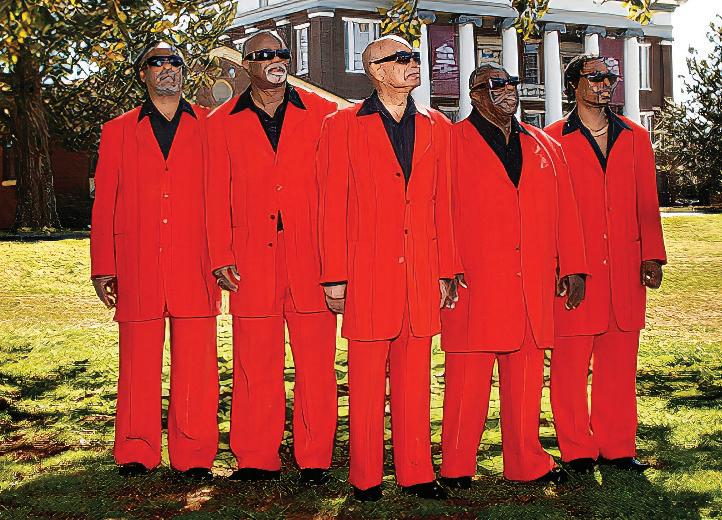
Obo Addy * African (Ghanaian) Master Drummer/Leader Portland, OR
Betty Pisio Christenson * Ukranian American Pysanky Suring, WI
Paul Dahlin Swedish American Fiddler Minneapolis, MN
Juan Gutiérrez Puerto Rican Drummer/Leader (Bomba and Plena) New York, NY
Solomon * & Richard * Ho’opii
Hawaiian Falsetto Singers/ Musicians Makawao, HI
Will Keys * Anglo-American Banjo Player Gray, TN
Joaquin Lujan * Chamorro Blacksmith GMF, GU
Eva McAdams * Shoshone Crafts/Beadwork Fort Washakie, WY
John Mealing * & Cornelius Wright, Jr. * African American Work Songs Birmingham, AL
Vernon Owens Anglo-American Potter Seagrove, NC
Dolly Spencer * Inupiat Dollmaker Homer, AK
Edward Babb * “Shout” Band Gospel Trombonist & Band Leader Jamaica, NY
Charles Brown * West Coast Blues Pianist & Composer Berkeley, CA
Gladys Leblanc Clark * Acadian (Cajun) Spinner & Weaver Duson, LA
Georgia Harris * Catawba Potter Atlanta, GA
Wen-Yi Hua * Chinese Kunqu Opera Singer Arcadia, CA
Ali Akbar Khan * North Indian Sarod Player & Raga Composer San Anselmo, CA
Ramón José López Santero & Metalsmith Santa Fe, NM
Jim * & Jesse * McReynolds Bluegrass Musician Gallatin, TN
Phong Nguyen Vietnamese Musician/Scholar Kent, OH
Hystercine Rankin * African American Quilter Lorman, MS
Francis Whitaker * Blacksmith/Ornamental Iron Work Carbondale, CO
Apsara Ensemble
Cambodian Musicians & Dancers Fort Washington, MD
Eddie Blazonczyk * Polish Polka Musician/Bandleader Bridgeview, IL
Bruce Caesar Sac Fox-Pawnee German Silversmith Anadarko, OK
Dale Calhoun * Boatbuilder (Reelfoot Lake Stumpjumper) Tiptonville, TN
Antonio De La Rosa * Tejano Conjunto Accordionist Riviera, TX
Epstein Brothers * Klezmer Musicians Sarasota, FL
Sophia George Yakima Colville Beadwork and Regalia Gresham, OR
Nadjeschda Overgaard * Danish Hardanger Embroidery Kimballton, IA
Harilaos Papapostolou * Byzantine Chant, Greek Orthodox Potomac, MD
Roebuck “Pops” Staples * Gospel /Blues Musician Dalton, IL
Claude “The Fiddler” Williams * Jazz Swing Fiddler Kansas City, MO
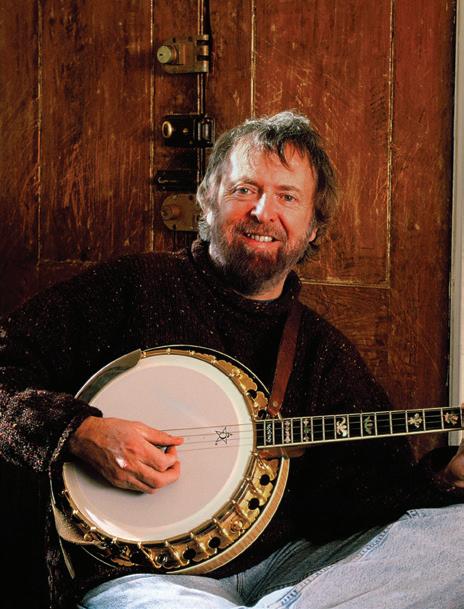
1999 Fellow
Frisner Augustin *
Haitian Drummer New York, NY
Lila Greengrass
Blackdeer * Hocak Black Ash Basketmaker, Needleworker Black River Falls, WI
Shirley Caesar Gospel Singer Durham, NC
Alfredo Campos
Horeshair Hitcher Federal Way, WA
Mary Louise Defender Wilson
Dakota Hidatsa Traditionalist and Storyteller Shields, ND
Jimmy “Slyde” Godbolt * African American Tap Dancer Hanson, MA
Ulysses “Uly” Goode * Western Mono Basketmaker North Fork, CA
Bob Holt * Ozark Fiddler Ava, MO
Zakir Hussain
North Indian Master Tabla Drummer San Anselmo, CA
Elliott “Ellie” Manette * Trinidadian Steel Pan Builder, Tuner, Performer Osage, WV
Mick Moloney * Irish Musician New York, NY
Eudokia Sorochaniuk * Ukranian Weaver, Textile Artist, Embroidery Pennsuaken, NJ
Ralph Stanley * Master Boatbuilder, (Friendship Sloop) Southwest Harbor, ME
* Deceased
Mick Moloney
Photo by Tom Pich
Bounxou Chanthraphone Lao Weaver, Embroiderer Brookland Park, MN
Dixie Hummingbirds * African American Gospel Quartet Philadelphia, PA
Felipe García Villamil Afro-Cuban Drummer/Santero Los Angeles, CA
José González * Puerto Rican Hammock Weaver San Sebastián, PR
Nettie Jackson * Klickitat Basketmaker White Swan, WA
Santiago Jiménez, Jr Tex-Mex Accordionist/Singer San Antonio, TX
Genoa Keawe * Hawaiian Tto Singer/ Ukulele Player Honolulu, HI
Frankie Manning * Lindy Hop Dancer Choreographer/ Innovator Corona, NY
Joe Willie “Pinetop” Perkins * Blues Piano Player La Porte, IN
Konstantinos Pilarinos * Orthodox Byzantine Icon Woodcarver Astoria, NY
Chris Strachwitz * BESS LOMAX HAWES AWARD Record Producer/Label Founder El Cerrito, CA
B. Dorothy Thompson * Appalachian Weaver Davis, WV
Don Walser * Cowboy & Western Singer/ Guitarist/Composer Austin, TX
Celestino Avilés * Santero Orocovis, PR
Mozell Benson * African American Quilter Opelika, AL
Wilson “Boozoo” Chavis * Zydeco Accordionist Lake Charles, LA
Hazel Dickens * Appalachian Singer Washington, DC
Evalena Henry Apache Basketweaver Peridot, AZ
Peter Kyvelos * Oud Builder Bedford, MA
João “João Grande” Olivera Dos Santos Capoeira Angola Master New York, NY
Eddie Pennington Thumbpicking Style Guitarist Princeton, KY
Qi Shu Fang Peking Opera Performer Woodhaven, NY
Seiichi Tanaka Taiko Drummer Dojo Founder San Francisco, CA
Dorothy Trumpold * Rug Weaver High Amana, IA
Fred Tsoodle * Kiowa Sacred Song Leader Mountian View, OK
Joseph Wilson * BESS LOMAX HAWES AWARD Folklorist/Advocate/Presenter Fries, VA
Ralph Blizard * Old-Time Fiddler Blountville, TN
Loren Bommelyn Tolowa Singer, Tradition Bearer, Basketmaker Crescent City, CA
Kevin Burke
Irish Fiddler Portland, OR
Francis * & Rose Cree * Ojibwa Basketmakers/Storytellers Dunseith, ND
Luderin Darbone */ Edwin Duhon * Cajun Fiddler and Accordionist Sulphur/Westlake, LA
Nadim Dlaikan
Lebanese Nye (Reed Flute) Player Southgate, MI
David “Honeyboy”
Edwards *
Delta Blues Guitarist/Singer Chicago, IL
Flory Jagoda * Sephardic Musician/Composer Alexandria, VA
Losang Samten
Tibetan Sand Mandala Painter Philadephia, PA
Bob McQuillen *
Contra Dance Musician Composer Peterborough, NH
Clara Neptune Keezer * Passamaquoddy Basketmaker Perry, ME
Jean Ritchie * BESS LOMAX HAWES AWARD
Appalachian Singer/Songwriter Dulcimer Player Port Washington, NY
Domingo “Mingo” Saldivar Conjunto Accordionist San Antonio, TX
BASQUE “BERTSOLARI” POETS
Jesus Arriada San Francisco, CA
Johnny Curutchet South San Francisco, CA
Martin Goicoechea
Rock Springs, WY
Jesus Goni Reno, NV
Rosa Elene Egipciaco * Puerto Rican Bobbin Lace “Mundillo” New York, NY
Agnes Oshanee Kenmille * Salish Beadwork and Tanning Ronan, MT
Norman Kennedy
Weaver/Ballad Singer Marshfield, VT
Roberto * & Lorenzo Martinez
Hispanic Guitarist & Violinist Albuquerque, NM
Norma Miller * African American Jazz Dancer, Choreographer Cape Coral, FL
Carmencristina Moreno
BESS LOMAX HAWES AWARD
Mexican American Singer, Composer, Teacher Fresno, CA
Ron Poast
Hardanger Fiddle Luthier and Player Black Earth, WI
Felipe I. & Joseph K. Ruak
Carolinian Stick Dance Leaders Saipan, MP
Manoochehr Sadeghi
Persian Santour Player Sherman Oaks, CA
Nicholas Toth
Diving Helmet Builder Tarpon Springs, FL
Anjani Ambegaokar * Kathak Dancer Diamond Bar, CA
Charles “Chuck” T.
Campbell Gospel Steel Guitarist Rochester, NY
Joe Derrane * Irish American Button Accordionist Randolph, MA
Jerry Douglas Dobro Player Nashville, TN
Gerald Subiyay Miller * Skokomish Tradition Bearer Shelton, WA
Milan Opacich * Tamburitza Instrument Maker Schererville, IN
Eliseo & Paula Rodriguez * Straw Applique Artists Santa Fe, NM
Koko Taylor * Blues Musician Country Club Hills, IL
Yuqin Wang & Zhengli Xu Chinese Rod Puppeteers Tigard, OR
Chum Ngek
BESS LOMAX HAWES AWARD
Cambodian Musician and Teacher Gaithersburg, MD
Herminia Albarrán
Romero Paper-Cutting Artist San Francisco, CA
Eldrid Skjold Arntzen * Norwegian American Rosemaler Watertown, CT
Earl Barthé *
Decorative Building Craftsman New Orleans, LA
Chuck Brown *
African American Musical Innovator Brandywine, MD
Janette Carter * BESS LOMAX HAWES AWARD
Appalachian Musician, Advocate Hiltons, VA
Michael Doucet
Cajun Fiddler, Composer, and Band Leader Lafayette, LA
Jerry Grcevich
Tamburitza Musician, Prim Player North Huntingdon, PA
Grace Henderson Nez * Navajo Weaver Ganado, AZ
Wanda Jackson Early Country, Rockabilly, and Gospel Singer Oklahoma City, OK
Beyle SchaechterGottesman * Yiddish Singer, Poet, Songwriter Bronx, NY
Albertina Walker * Gospel Singer Chicago, IL
James Ka’upena Wong * Hawaiian Chanter Waianae, HI
Charles M. Carrillo
Santero (Carver and Painter of Sacred Figures) Santa Fe, NM
Delores E. Churchill Haida (Native Alaskan) Weaver Ketchican, AK
Henry Gray * Blues Piano Player, Singer Baton Rouge, LA
Doyle Lawson
Gospel and Bluegrass Singer, Arranger, and Bandleader Bristol, TN
Esther Martinez * Native American Linguist and Storyteller San Juan Pueblo, NM
Diomedes Matos Cuatro (10-String Puerto Rican Guitar) Maker Deltona, FL
George Na’ope * Kumu Hula (Hula Master) Hilo, HI
Wilho Saari * Finnish Kantele (Lap-Harp) Player Naselle, WA
Mavis Staples Gospel, Rhythm and Blues Singer Chicago, IL
Nancy Sweezy * BESS LOMAX HAWES AWARD Advocate, Scholar, Presenter, and Preservationist Lexington, MA
Treme Brass Band New Orleans Brass Band New Orleans, LA

2006
Nicholas Benson Stone Letter Carver and Calligrapher Newport, RI
Sidiki Conde Guinean Dancer and Musician New York, NY
Violet De Cristoforo * Haiku Poet And Historian Salinas, CA
Roland Freeman * BESS LOMAX HAWES AWARD
Photo Documentarian, Author, and Exhibit Curator Washington, DC
Pat Courtney Gold * Wasco Sally Bag Weaver Scappoose, OR
Eddie Kamae * Hawaiian Musician, Composer, Filmmaker Honolulu, HI
Agustin Lira
Chicano Singer, Musician, Composer Fresno, CA
Julia Parker Kashia Pomo Basketmaker Midpines, CA
Mary Jane Queen * Appalachian Musician Cullowhee, NC
Joe Thompson * African American String Band Musician Mebane, NC
Irvin L. Trujillo Rio Grande Weaver Chimayo, NM
Elaine Hoffman Watts * Klezmer Musician Havertown, PA
* Deceased
Horace P. Axtell *
Nez Perce Elder, Spiritual Leader, and Drum Maker Lewiston, ID
Dale Harwood Saddlemaker Shelley, ID
Bettye Kimbrell * Quilter Mt. Olive, Al
Jeronimo E. Lozano * Retablo Maker Salt Lake City, UT
Walter Murray Chiesa * BESS LOMAX HAWES AWARD Traditional Crafts Advocate Bayamón, PR
Oneida Hymn Singers Of Wisconsin Hymn Singing Oneida, WI
Sue Yeon Park
Korean Dancer and Musician New York, NY
Moges Seyoum Ethiopian Church Musician Alexandria, VA
Jelon Vieira Capoeira Master New York, NY
Michael G. White
Jazz Clarinetist, Band Leader, Scholar New Orleans, LA
Mac Wiseman * Bluegrass and Country Singer and Musician Nashville, TN
The Birmingham Sunlights A Cappella Gospel Group Birmingham, AL
Edwin Colón Zayas Cuatro Player Orocovis, PR
Chitresh Das *
Kathak Dancer and Choreographer San Francisco, CA
Leroy Graber *
German Russian Willow Basketmaker Freeman, SD
“Queen” Ida Guillory Zydeco Musician Daly City, CA
Dudley Laufman Dance Caller and Musician Cantebury, NH
Amma D. McKen
Yoruba Orisha Singer Brooklyn, NY
Joel Nelson Cowboy Poet Alpine, TX
Teri Rofkar * Tlingit Weaver and Basketmaker Sitka, AK
Mike Seeger *
BESS LOMAX HAWES AWARD
Musician, Cultural Scholar, and Advocate Lexington, VA
Sophiline Cheam
Shapiro
Cambodian Classical Dancer and Choregrapher Long Beach, CA
Yacub Addy * Ghanaian Drum Master Latham, NY
Jim “Texas Shorty” Chancellor Fiddler Rockwall, TX
Gladys Kukana Grace * Lauhala (Palm Leaf) Weaver Honolulu, HI
Mary Jackson
Sweetgrass Basketweaver Johns Island, SC
Del McCoury
Bluegrass Guitarist and Singer Hendersonville, TN
Judith McCulloh * BESS LOMAX HAWES AWARD Folklorist and Editor Urbana, IL
Kamala Lakshmi Narayanan Bharatanatyam Indian Dancer Mastic, NY
Mike Rafferty * Irish Flute Player Hasbrouck Heights, NJ
Ezequiel Torres Afro-Cuban Drummer and Drum Builder Miami, FL
Laverne Brackens
Quilter Fairfield, TX
Bo Dollis * Mardi Gras Indian Chief New Orleans, LA
Jim Griffith *
BESS LOMAX HAWES AWARD
Folklorist Tuscon, AZ
Roy and Pj Hirabayashi
Taiko Drum Leaders San Jose, CA
Ledward Kaapana
Slack Key Guitarist Kaneohe, HI
Frank Newsome
Old Regular Baptist Singer Haysi, VA
Carlinhos Pandeiro De Ouro
Frame Drum Player and Percussionist Los Angeles, CA
Warner Williams * Piedmont Blues Songster Gaithersburg, MD
Yuri Yunakov
Bulgarian Saxophonist Bloomfield, NJ

Mike Auldridge * Dobro Player Silver Spring, MD
Paul * & Darlene Bergren * Dog Sled and Snowshoe Designers and Builders Minot, ND
Harold A. Burnham Master Shipwright Essex, MA
Albert B. Head
BESS LOMAX HAWES AWARD Traditional Arts Advocate Montgomery, AL
Leonardo “Flaco” Jimenez Tejano Accordion Player San Antonio, TX
Lynne Yoshiko Nakasone * Okinawan Dancer Honolulu, HI
Molly Jeannette
Neptune Parker * Passamaquoddy Basket Maker Princeton, ME
The Paschall Brothers Tidewater Gospel Quartet Chesapeake, VA
Andy Statman Klezmer Clarinetist, Mandolinist, and Composer Brooklyn, NY
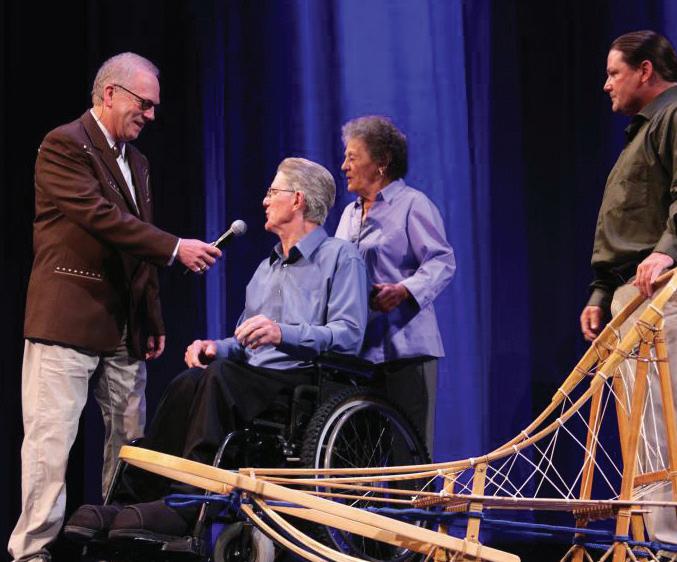
Paul and Darlene Bergren
Sheila Kay Adams
Ballad Singer, Musician, & Storyteller Marshall, NC
Ralph Burns Storyteller, Pyramid Lake Paiute Tribe Nixon, NV
Verónica Castillo Ceramicist & Clay Sculptor San Antonio, TX
Séamus Connolly Irish Fiddler North Yarmouth, ME
Nicolae Feraru Cimbalom Player Chicago, IL
Carol Fran * Swamp Blues Singer & Pianist Lafayette, LA
Pauline Hillaire *
BESS LOMAX HAWES AWARD Tradition Bearer, Lummi Tribe Bellingham, WA
David Ivey Sacred Harp Hymn Singer Huntsville, AL
Ramón “Chunky” Sánchez * Chicano Musician & Culture Bearer San Diego, CA
Henry Arquette * Mohawk Basketmaker Hogansburg, NY
Manuel “Cowboy” Donley * Tejano Musician and Singer Austin, TX
Kevin Doyle Irish Step Dancer Barrington, RI
THE HOLMES BROTHERS
Sherman Holmes
Wendell Holmes * Popsy Dixon * Blues, Gospel, and Rhythm and Blues Band Rosedale, Md Saluda, VA
Yvonne Walker Keshick Odawa Quillworker Petoskey, MI
Carolyn Mazloomi
BESS LOMAX HAWES AWARD Quilting Community Advocate West Chester, OH
Vera Nakonechny Ukrainian Embroiderer, Weaver and Beadworker Philadelphia, PA
Singing and Praying Bands of MD and DE
African American Religious Singers Maryland and Delaware
Rufus White Omaha Traditional Singer and Drum Group Leader Walthill, NE
Rahim AlHaj
Oud Player & Composer Albuquerque, NM
Michael Alpert
Yiddish Musician and Tradition Bearer New York, NY
Mary Lee Bendolph, Lucy Mingo, and Loretta Pettway
Quilters of Gee’s Bend Boykin, AL
Dolly Jacobs Circus Aerialist Sarasota, FL
Yary Livan Cambodian Ceramicist Lowell, MA
Daniel Sheehy
BESS LOMAX HAWES AWARD
Ethnomusicologist/Folklorist Falls Church, VA
Drink Small Blues Artist Columbia, SC
Gertrude Yukie
Tsutsumi
Japanese Classical Dancer Honolulu, HI
Sidonka Wadina
Slovak Straw Artist/Egg Decorator Lyons, WI
* Deceased
Bryan Akipa
Dakota Flute Maker and Player Sisseton, SD
Joseph Pierre “Big Chief Monk” Boudreaux
Mardi Gras Indian Craftsman and Musician New Orleans, LA
Billy McComiskey Irish Button Accordionist Baltimore, MD
Artemio Posadas
BESS LOMAX HAWES AWARD
Master Huastecan Son Musician and Advocate San Jose, CA
Clarissa Rizal *
Tlingit Ceremonial Regalia Maker Juneau, AK
Theresa Secord
Penobscot Nation Ash/Sweetgrass Basketmaker Waterville, ME
Bounxeung Synanonh Laotian Khaen (free-reed mouth organ) Player Fresno, CA
Michael Vlahovich Master Shipwright Tacoma, WA/St. Michaels, MD
Leona Waddell
White Oak Basketmaker Cecilia, KY
Norik Astvatsaturov *
Armenian Repoussé Metal Artist Wahpeton, ND
Anna Brown Ehlers Chilkat Weaver Juneau, AK
Modesto Cepeda Bomba and Plena Musician San Juan, PR
Ella Jenkins
Children’s Folk Singer and Musician Chicago, IL
Dwight Lamb
BESS LOMAX HAWES AWARD
Danish Button Accordionist and Missouri-Style Fiddler Onawa, IA
Thomas Maupin Old-time Buckdancer Murfreesboro, TN
Cyril Pahinui * Hawaiian Slack-key Guitarist, Waipahu, HI
Phil Wiggins * Acoustic Blues Harmonica Player Takoma Park, MD
Eva Ybarra Conjunto Accordionist and Band Leader San Antonio, TX
Feryal Abbasi-Ghnaim Palestinian Embroiderer Milwaukie, OR
Eddie Bond Appalachian Old-Time Fiddler Fries, VA
Kelly Church
Anishinabe (Gun Lake Band) Black Ash Basketmaker Allegan, MI
Marion Coleman *
African American Quilter Castro Valley, CA
Manuel Cuevas Rodeo Tailor Nashville, TN
Ofelia Esparza Chicana Altarista (Day of the Dead Altar Maker) Los Angeles, CA
Barbara Lynn R&B Musician Beaumont, TX
Ethel Raim
BESS LOMAX HAWES AWARD Traditional Music and Dance Advocate New York, NY
Don & Cindy Roy Franco-American Musicians Gorham, ME
Dan Ansotegui
Basque Musician and Tradition Bearer Boise, ID
Grant Bulltail * Crow Storyteller Crow Agency, MT
Bob Fulcher
BESS LOMAX HAWES AWARD
Folklorist and State Park Manager Clinton, TN
Linda Goss
African American Storyteller Baltimore, MD
James F. Jackson Leatherworker Sheridan, WY
Balla Kouyaté Balafon Player and Djeli Medford, MA
Josephine Lobato
Spanish Colcha Embroiderer Westminster, CO
Rich Smoker Decoy Carver Marion Station, MD
LAS TESOROS DE SAN ANTONIO Beatriz (La Paloma del Norte) Llamas * and Blanquita (Blanca Rosa) Rodríguez Tejano Singers San Antonio, TX

William Bell
Soul Singer and Songwriter Atlanta, GA
Onnik Dinkjian
Armenian Folk and Liturgical Singer Fort Lee, NJ
Zakarya * and Naomi Diouf
West African Diasporic Dancers Oakland/Castro Valley, CA
Karen Ann Hoffman (Oneida Nation of Wisconsin)
Haudenosaunee Raised Beadworker Stevens Point, WI
Los Matachines de la Santa Cruz de la Ladrillera
Traditional Religious Dancers Laredo, TX
Hugo N. Morales
BESS LOMAX HAWES AWARD
Radio Producer and Network Builder Fresno, CA
John Morris
Old-Time Fiddler and Banjo Player Ivydale, WV
Suni Paz
Nueva Canción Singer and Songwriter Henderson, NV
Wayne Valliere (Lac du Flambeau Ojibwe)
Birchbark Canoe Builder Waaswaaganing (Lac du Flambeau, WI)
Cedric Burnside
Hill Country Blues Musician Ashland, MS
Tom Davenport
BESS LOMAX HAWES AWARD
Filmmaker, Documentarian, and Media Curator Delaplane, VA
Tagumpay Mendoza De Leon
Rondalla Musician Burbank, CA
Anita Fields (Osage/Muscogee)
Osage Ribbon Worker Tulsa, OK
Los Lobos
Mexican American Band Los Angeles, CA
Joanie Madden
Irish Flute Player Yonkers, NY
Reginald “Reggio the Hoofer” McLaughlin Tap Dancer Chicago, IL
Nellie Vera
Mundillo Master Weaver Moca, Puerto Rico
Winnsboro Easter Rock
Ensemble Easter Rock Spiritual Ensemble Winnsboro, LA
Michael Cleveland Bluegrass Fiddler Charlestown, IN
Eva Enciñias Flamenco Artist Albuquerque, NM
Excelsior Band Brass Band Musicians Mobile, AL
Stanley Jacobs Quelbe Flute Player and Bandleader St. Croix, VI
The Legendary Ingramettes Gospel Artists Richmond, Virginia
TahNibaa Naataanii (Navajo/Diné)
BESS LOMAX HAWES AWARD Navajo/Diné Textile Artist and Weaver Shiprock, NM
Francis P. Sinenci Master Hawaiian Hale Builder Hāna, HI
Tsering Wangmo Satho Tibetan Opera Singer & Dancer Richmond,CA
C. Brian Williams Step Artist and Producer Washington, DC
Shaka Zulu New Orleans Black Masking Craftsman, Stilt Dancer, and Musician New Orleans, LA
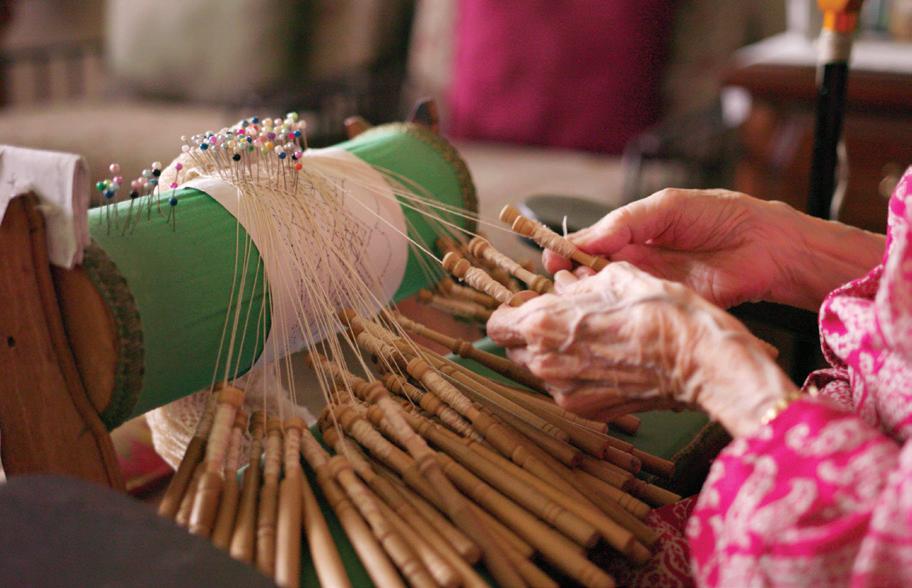
Nellie Vera
* Deceased
R.L. Boyce *
Hill Country Blues Musician Como, Mississippi
Ed Eugene Carriere (Suquamish) Suquamish Basketmaker Indianola, Washington
Michael A. Cummings African American Quilter New York, New York
Joe DeLeon “Little Joe” Hernández
Tejano Music Performer Temple, Texas
Roen Hufford
Kapa Maker Waimea, Hawai‘i
Elizabeth James-Perry (Wampanoag Tribe of Gay Head, Aquinnah) Wampum & Fiber Artist Dartmouth, Massachusetts
Nick Spitzer
BESS LOMAX HAWES AWARD
Folklife Presenter, Educator, and Radio Producer New Orleans, Louisiana
Luis Tapia Sculptor, Hispano Woodcarving Tradition
Santa Fe, New Mexico
Wu Man
Pipa Player Carlsbad, California
The NEA National Heritage Fellowship is the nation’s highest honor in folk and traditional arts. Each year since 1982, the program has recognized folk and traditional artists whose exemplary achievements contribute to our nation’s distinctive cultural heritage, increasing opportunities for the public to encounter different artists, art forms, and cultural traditions.
Through their folk and traditional arts practices, National Heritage Fellows demonstrate the importance of the arts to personal, cultural, and national identity and reflect the benefits that artful lives contribute to the well-being of individuals and their communities.
Annually, the NEA awards at least nine National Heritage Fellowships, including one Bess Lomax Hawes Fellowship. The Hawes Fellowship recognizes an individual who has made major contributions to the excellence, vitality, and public appreciation of the folk and traditional arts.
National Heritage Fellowship nominees must be worthy of national recognition and have a record of continuing artistic accomplishment. They must be actively participating in their art form, either as practitioners, mentors, or as community scholars. Successful nominations demonstrate significant contributions to living traditional arts, their source communities, and/or the transmission of traditional knowledge to future generations.
Awards for the National Heritage Fellowships (including the Bess Lomax Hawes Fellowship) will be up to $25,000, and may be received once in a lifetime. Nomination deadlines are generally in May of each year. Nominations remain active for a total of four years.
Visit arts.gov/honors/heritage for more information.
Established by Congress in 1965, the National Endowment for the Arts is the independent federal agency whose funding and support gives Americans the opportunity to participate in the arts, exercise their imaginations, and develop their creative capacities. Through partnerships with state arts agencies, local leaders, other federal agencies, and the philanthropic sector, the Arts Endowment supports arts learning, affirms and celebrates America’s rich and diverse cultural heritage, and extends its work to promote equal access to the arts in every community across America. Visit arts.gov to learn more.


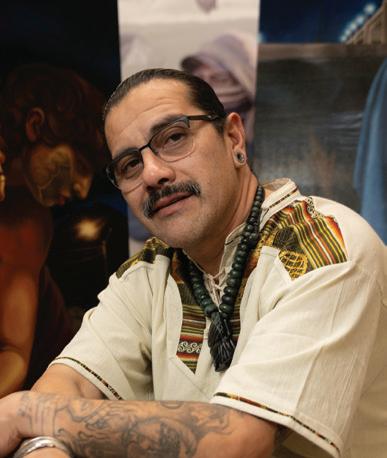
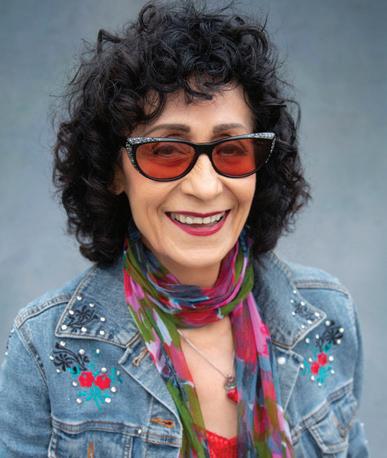


CAROUSEL CARVER AND RESTORATIONIST



